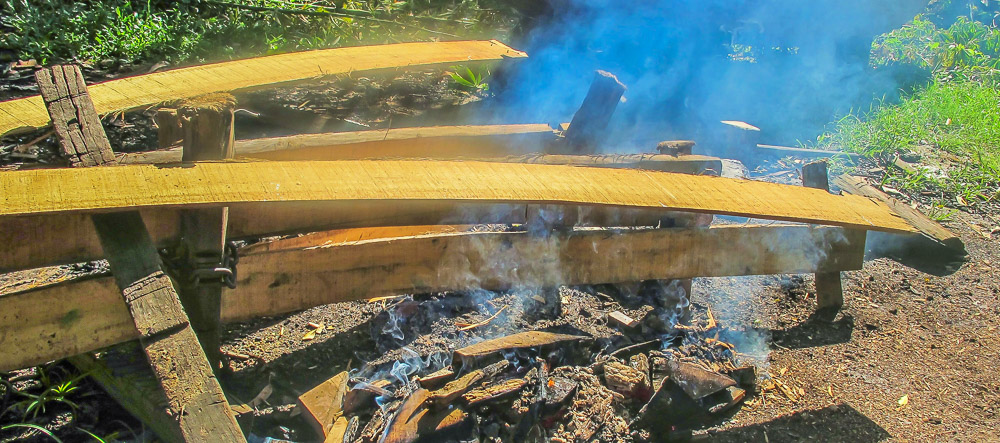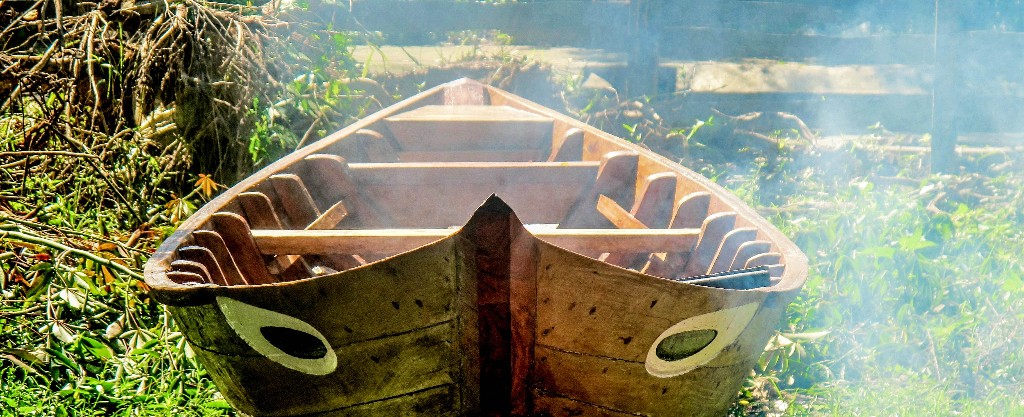Tourists flock to the Marble Mountains, the Lady Buddha and Ba Na Hills on a well-worn circuit. But if you want to get closer to traditional life in Vietnam as it’s been lived for centuries Kim Bong Carpentry Village is a great place to start.
Kim Bong Carpentry Village is located on Cam Kim Island, and it’s a showcase for Hoi An’s traditional crafts. The town has a long history of arts and crafts, dating back over 500 years to when the region was a bustling trading port.
As Hoi An turned into a major player on the Silk Road, and Chinese, Japanese and even European merchants made the area their home, the need for dedicated crafts’ centers was never higher. Kim Bong initially focused on furniture, materials for house building and ships both large and small. The demand for skilled woodworkers of all types reached its peak in the 18th century.
Despite a decline in the industry, traditional woodworking thankfully continues on site at Kim Bong, in the same area where it’s been conducted since its inception. The village has also seen new opportunities arise from the relatively recent international tourist boom, and today you can visit the village to marvel at the skills on display

History of Kim Bong
It’s thought that the initial founders of woodwork on the site in the 15th century were soldiers from four families – Huynh, Nguyen, Truong, and Phan. Descendants bearing these surnames still continue to work on the site today!
Timing is a massive part of building a successful business, and the trading boom taking place in Hoi An just across the river gave the site a huge amount of business. The quality of workmanship on the site contributed to Kim Bong becoming the choice place for all woodworking requirements.
The main demand for wood was for housing, ship-building and tools. Workers from Kim Bong were also commissioned to produce the detailed carving work found in many of the former Imperial buildings in Hue, and also on Ho Chi Minh’s mausoleum.
Although there’s less demand for wood these days, Kim Bong has continued to thrive by embracing the tourist industry. Traditional fishing boats are still in demand, and workers at Kim Bong also look after restoration work within the Old Town itself.


Training Courses
A penchant for different building materials during the French colonial period, combined with Vietnam’s international markets opening up in the early 1990s saw the woodworking industry fall into decline. Incomes were so low for those involved in the profession that there was little incentive for people to put in the hours when the same wages could be earned elsewhere for much less effort and time.
A descendent of one of the original four craftsman – Huynh Ri – opened up the village to apprentices in an attempt to keep the tradition alive. The tourist boom following the Old Town being granted UNESCO heritage status in 1999 saw a further boom to Kim Bong. Not only did the site open up as a tourist attraction in itself, but many of its workers are now employed on restoration projects – fixing and preserving the original work of their ancestors in order to keep the Old Town in its current picture-postcard condition.
FAQs
What Does Kim Bong Carpentry Village Make?
Kim Bong made its name in ship-building and architecture. It also specialized in furniture, and many of the pieces found in houses around Hoi An will have been crafted there. Such pieces are often elaborately-carved and passed down from one generation to another. The village also creates tools, kitchenware, and statues as souvenirs. Find a carved Buddha around Hoi An and there’s a high chance it was created at the site on Cam Kim Island!
How Much Does it Cost to Visit Kim Bong Carpentry Village?
It’s currently free to visit the village, and you may find local students on hand. They’ll offer to take you around and be an interpreter for you, in order to practise their English skills, and they’ll also be on hand to answer any questions you might have. Various tours are available as well. These will often pick you up from your hotel or homestay in Hoi An and include two or more craft-based villages. Combining a tour to Kim Bong and Thanh Ha Pottery Village is a popular choice for many.
How do I get to Kim Bong Carpentry Village?
It’s easy enough to find the village on Cam Kim Island, just a short distance across the river from Hoi An. The bridge, linking An Hoi Islet with Cam Kim, is a relatively new addition – before, the island was only connected to the mainland by boat. These days it’s easy to reach via bicycle or motorbike. You could also choose the most scenic and traditional route and travel by ferry! There’s also a new bridge – big enough for cars, buses and even heavy goods’ vehicles – which links the island with Thanh Ha Village, just to the west of Hoi An’s Old Town. Find our overall guide to Cam Kim Island here.